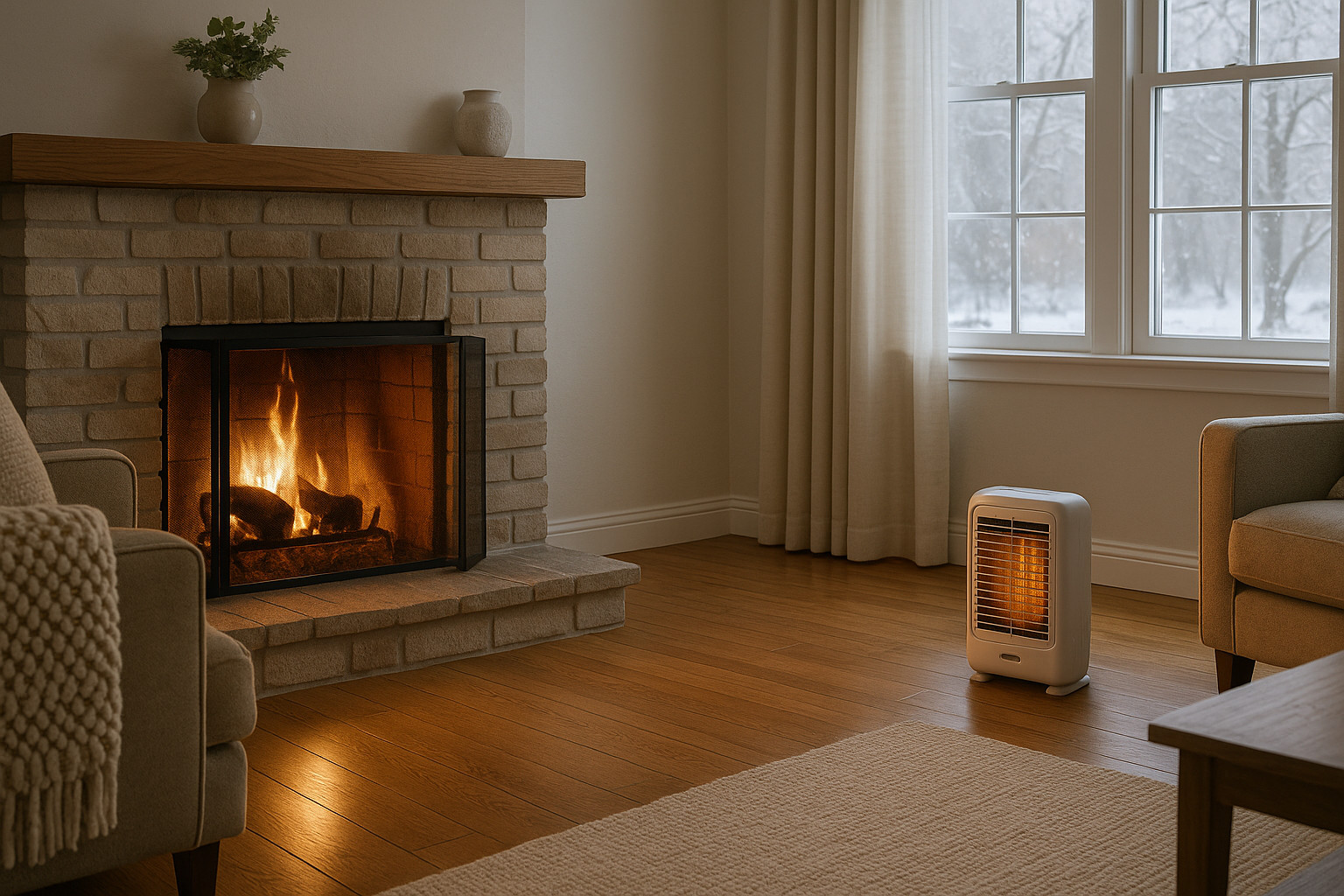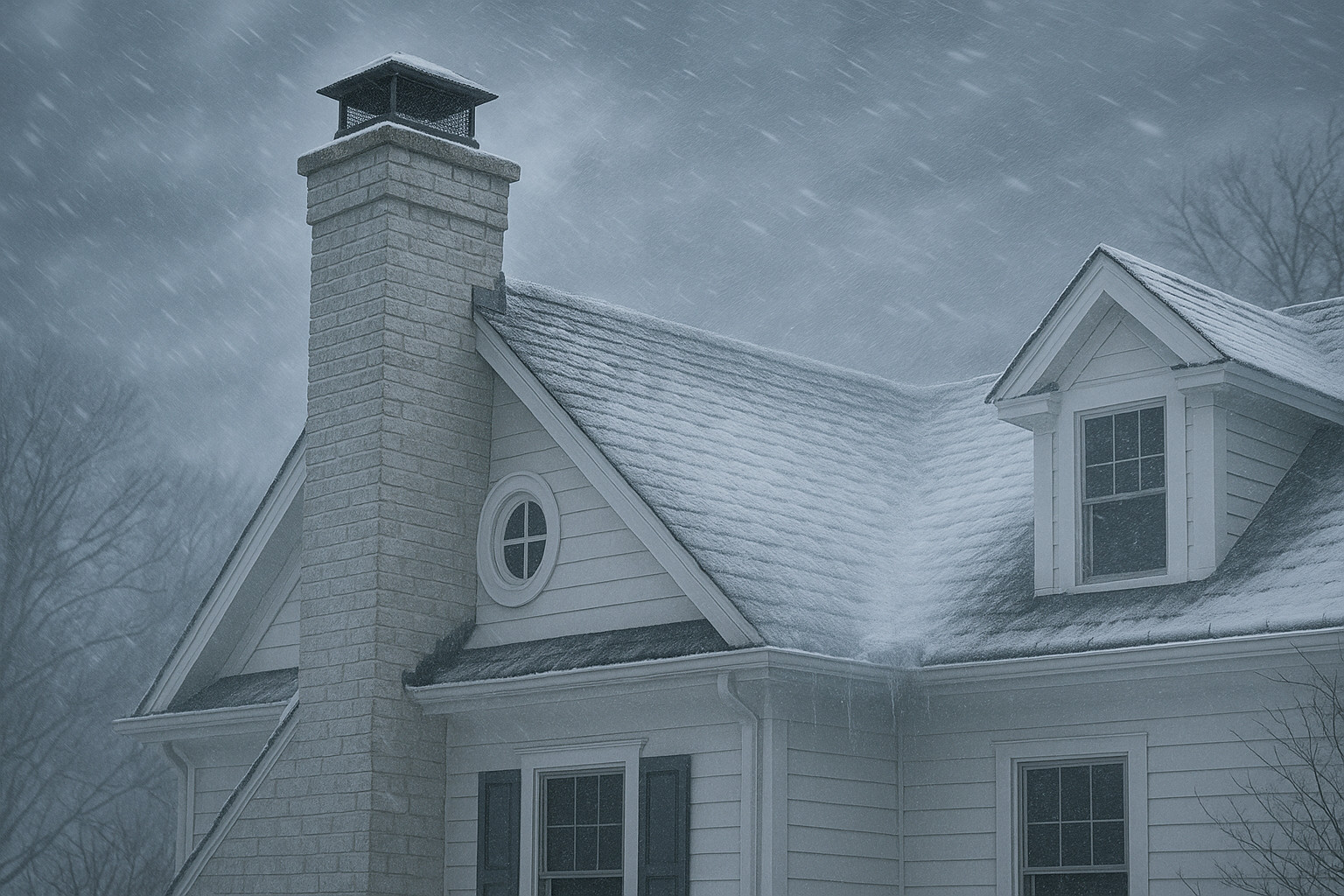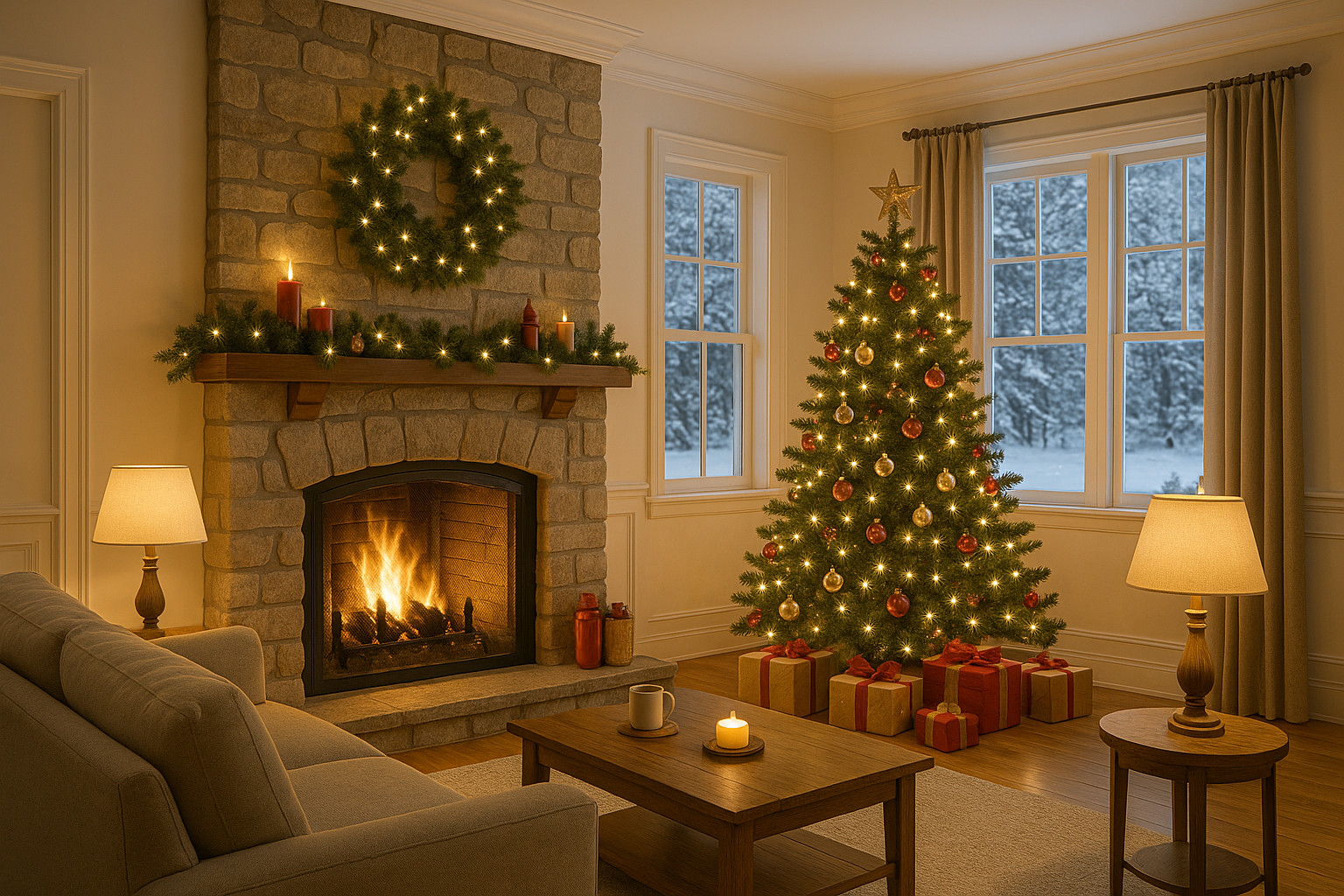Why CT Homes With Wood Stoves Need More Frequent Chimney Cleanings
Wood stoves keep Connecticut homes warm and charming, but they also create faster creosote buildup that raises fire and carbon monoxide risks. Certified Chimney provides expert cleaning and inspections to keep your home safe, efficient, and ready for winter.
Share:
Table of Contents
Easton, CT is known for its rural charm, historic properties, and cold winters—making wood stoves a popular choice for home heating. These appliances are appreciated for their cost-efficiency, traditional appeal, and ability to provide reliable heat during power outages. However, the use of wood stoves, particularly older or non-EPA-certified models, can lead to faster creosote buildup and an increased need for chimney maintenance compared to homes that rely on gas or electric heating systems.
Understanding Creosote Buildup
What Is Creosote?
Creosote is a highly flammable byproduct created when wood smoke cools and condenses along the inner walls of a chimney flue. It begins as light, flaky soot but can evolve into thick, tar-like deposits that cling to masonry and metal liners. These hardened creosote layers—known as Stage 3 creosote—are particularly dangerous and require professional removal. In wood stove systems common in Easton, CT, especially those in older homes near the Saugatuck Reservoir or along Route 58, creosote buildup is a leading concern.
Why Creosote Accumulates
Several conditions contribute to accelerated creosote accumulation:
- Unseasoned or damp firewood: Moisture content slows combustion, causing more smoke and particles to settle in the flue.
- Inadequate airflow: Homes with aging chimneys, long stovepipe runs, or poorly designed vents experience restricted draft, allowing smoke to linger.
- Low-temperature burns: Long, slow burns often used to stretch firewood supplies or maintain overnight heat, fail to produce the high heat necessary to keep the flue clean.
- Frequent use of wood-burning appliances: Easton homes relying on wood stoves daily throughout winter are especially vulnerable.
This buildup is often accelerated in traditional masonry chimneys, particularly those lacking stainless steel liners or modern insulation systems.
Dangers of Creosote Buildup
Excess creosote is one of the primary causes of residential chimney fires. When ignited, it can reach temperatures exceeding 2,000°F hot enough to crack flue tiles, ignite surrounding wooden framing, or compromise chimney crowns and flashing. In homes near Easton’s wooded areas like Rock House Road or beyond Tuckahoe Road, undetected chimney fires pose a serious risk, especially in densely wooded surroundings.
Aside from fire hazards, heavy creosote reduces the draft needed for safe smoke evacuation. This can result in:
- Carbon monoxide exposure from inefficient combustion
- Reduced heating efficiency
- Lingering odors and smoky air inside the home
- Costly structural damage requiring flue relining or chimney rebuilding
Routine maintenance and annual inspections by certified chimney sweeps are essential for keeping creosote under control and ensuring safe operation throughout Connecticut’s heating season.
The Risks Associated With Older Wood Stoves
Non-EPA Compliant Stoves
Many homes in Easton, CT particularly in historic neighborhoods near Sport Hill Road, Maple Road, and Staples Elementary still rely on older wood stoves that predate EPA certification standards. These stoves are not designed to optimize combustion, meaning they release more smoke, soot, and unburned gases into the flue system. This inefficient burning process accelerates the accumulation of creosote, soot, and other combustion byproducts. In colder months, when wood stoves are used as the primary source of heat, the risk of chimney fire from these emissions significantly increases.
In contrast, modern EPA-certified wood stoves and non-catalytic re-burn systems are engineered for cleaner burning and better airflow, greatly minimizing creosote buildup. Homeowners considering an upgrade not only improve safety but also reduce environmental impact and fuel consumption. Easton residents who burn wood frequently are encouraged to switch to compliant stoves to align with Connecticut Department of Energy and Environmental Protection (DEEP) guidelines for safer wood-burning practices.
Impact of Stove Age on Cleaning Frequency
The age of your wood stove directly affects how often your chimney should be swept. Older units tend to operate at lower temperatures and lack secondary burn features, producing more smoke particles, condensation, and sticky residue that clings to the chimney liner. These older stoves also contribute to poor draft performance, especially in homes with long horizontal stovepipe runs or masonry flues.
For residents in Easton neighborhoods near the Aspetuck Land Trust or bordering the Trout Brook Valley Preserve—where colder, longer winters are common—chimneys connected to outdated stoves may require cleaning two to three times per year. The more frequently the stove is used, the more crucial it becomes to increase the chimney sweep schedule to avoid chimney fires and carbon monoxide risks.
Structural and Performance Factors Affecting Chimney Sweep Frequencies
Chimney Design and Airflow
Easton homes, especially historic ones, often feature masonry chimneys with unique flue configurations. Poor draft design, long horizontal runs, or cooler exterior walls can all hinder smoke evacuation and increase residue deposits.
Influence of Burn Habits on Cleaning Needs
Burning green or wet wood, smoldering fires overnight, and restricting air intake can all exacerbate creosote buildup. Homeowners who regularly engage in these practices should consider chimney inspections more than once a year.
Safety Concerns: Carbon Monoxide and Chimney Fires
Carbon Monoxide Risks
Carbon monoxide is a colorless, odorless, and lethal gas produced by fuel-fired appliances such as wood-burning stoves, pellet stoves, gas fireplaces, and wood-burning fireplaces. In Easton homes, this risk is amplified when the chimney draft is poor or the venting system is obstructed by creosote buildup, chimney gunk, or structural defects in the interior chimney.
Without proper chimney sweep services, toxic gases can backflow into the living space, leading to carbon monoxide poisoning and serious respiratory ailments. Installing smoke alarms and carbon monoxide detectors near all combustion appliances is essential, especially for homes using re-burn stoves, catalytic stoves, or older non-catalytic stoves that burn less efficiently.
How Chimney Fires Start
Chimney fires are a major concern in Easton households that rely on wood-burning stoves, pellet stoves, or fireplace inserts for heat. These fires typically ignite when thick layers of stage 2 or 3 creosote, soot, or chimney obstruction catch fire from high flue temperatures or flying embers. Warning signs include loud cracking or popping sounds, a strong odor, thick black smoke, or even visible flames exiting the chimney top.
Exterior chimney walls that cool quickly can accelerate creosote condensation, especially when the home lacks fire-resistant materials around the flue. Without regular Level 1 chimney inspections, these dangers may go unnoticed until a fire occurs.
Preventive Measures for Safety
To reduce fire risk and protect indoor air quality, homeowners in Easton should take a proactive approach to chimney and fireplace maintenance:
- Schedule professional chimney inspections and cleaning at least once a year ideally with a provider certified by the Chimney Safety Institute of America (CSIA) or the National Fire Protection Agency.
- Use only dry, seasoned firewood species with low moisture content, and avoid burning construction debris or fossil fuels in wood stoves.
- Opt for EPA-certified Catalytic Wood Stoves or Wood Burning Furnaces with built-in airwash facilities and self-cleaning glass, which reduce particulate output and enhance combustion efficiency.
- Perform regular ash removal and clean fireplace inserts using proper wire brushes, never makeshift tools.
- Confirm your chimney has a functioning chimney cap installation and an intact chimney liner system, especially if you’re operating older combustion appliances or switching to Hydronic Heaters or Oil Furnace Chimneys.
- Verify that your chimney professionals carry proper liability insurance, follow flame safety gear protocols, and provide transparent pricing for the cost of chimney cleaning.
Investing in chimney liner installation, replacing damaged stainless pipes, or reinforcing aging masonry with targeted masonry repairs can also prevent chimney obstruction and enhance fire safety.
The Role of Professional Cleaning Services
Why Hire a Professional Chimney Sweeper?
DIY chimney cleaning can miss critical issues. Certified chimney sweeps use specialized tools and safety protocols to remove all stages of creosote and identify hidden concerns. Hiring professionals like Certified Chimney ensures code compliance and peace of mind.
Overview of the Professional Chimney Cleaning Process
A professional sweep includes setting up protective coverings, cleaning the flue from top to bottom, inspecting the cap and crown, checking for damage, and providing a written report with recommendations.
Need your chimney inspected or cleaned in Easton, CT?
Trust Certified Chimney for expert, CSIA-certified chimney sweeping, inspections, and repairs. Schedule your service today to keep your wood stove safe and efficient.
Article details:
- Published by:
- Certified Chimney CT
- Published to:
- Last modified:
- August 24, 2025
Share:
Continue learning:



